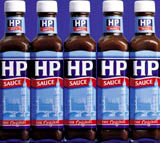Examining the analysis
WPP Group’s addition of research group Icon Brand Navigation Group to its stable will improve its branding and identity businesses.

It’s no secret that most designers would rather never have to see their work go into research. While few are likely to voice this, for fear of losing favour with their research-obsessed clients, many at least wish that research happened earlier in the process and was better executed.
One way of achieving this is to have a hand in the research yourself. Hence the number of consultancies which are buying into research companies, or which have an in-house research capability. This is typified by Jones Knowles Ritchie’s Martin Cunningham, the ex-director of research at Whitbread.
“More often than not, my design clients have strategic, qualitative research on their wish list as it fits in with their offer,” says Amanda Merron, partner at accountant Willott Kingston Smith. “It means you can give a thorough service.”
WPP Group is the master of this approach, owning Research International, BMRB International, BPRI, Millward Brown, and now Icon Brand Navigation Group (DW 5 April). Its latest acquisition has 220 staff, with offices around Europe and clients including Kellogg’s, Kodak, Nestlé, Nokia, Siemens and Lufthansa. “Icon will work on developing corporate and product brand positioning with WPP’s branding and identity businesses, particularly Enterprise IG,” says a WPP spokeswoman.
Dave Allen, chief executive of Enterprise IG, says, “We see considerable opportunities for improving the way market information and strategic planning is used to create, define and manage global brands. By bringing our two skill sets (Enterprise IG and Icon Brand Navigation) into closer alignment we believe we can further improve the quality of our strategic and creative outputs.”
Both these approaches give the designers some peace of mind, as there is nothing worse than seeing your precious concept binned because of some badly run focus group’s negative reaction.
“It is a long way from the one-and-a-half hour focus group, to the subtle interaction between a customer and a pack at the point of purchase, or the moment of usage, which is often hurried and unconsidered, not self-conscious and analysed,” says Phil Lawder, associate director at BrownKSDP, which often works with the research team Insight at sister company Added Value.
Claire Nuttall at Dragon Group agrees. “We have seen key design routes rejected because consumers are simply sitting in a white room which has absolutely nothing to do with the brand experience,” she says.
Dragon tries to get round this by putting focus groups in a more realistic environment. So for research into alcoholic brands, consumers are given mocked up bottles in a bar. “You are actually entering the decision-making arena and need state, so this can only produce more realistic and useful feedback,” says Nuttall.
But not all the blame should be planted at the feet of the focus group participants. After all, they’re only trying to be helpful, even if they have a tendency to over-analyse. The damage is actually done when the findings of a focus group are poorly interpreted by the researcher. “Consumers don’t have the vocabulary for research, and researchers report verbatim, rather than digging down,” says Lawder.
This can have a detrimental effect on a design concept, and if the client lives and dies by the findings, it can even see ideas being thrown out completely. “There is a role for research, but I would rather clients didn’t always assume that research was right,” says Lawder.
“The key, for me, is not the ability to gather data, but to interpret data and create,” adds Enterprise IG’s Allen. “Research can never tell you what to do. It only provides the brain food for creative people to develop creative solutions. Icon Brand Navigation has enormous strengths in analysing market knowledge and then working with its clients, helping them to develop and think through their branding strategy, particularly in the area of consumer branding.”
Most brand consultancies can point to their projects which have been commercially successful, despite not going into research. For JKR it’s the clam shell box it designed for Molton Brown’s eyeshadow. “All the logic is it’s over packaged, but it has a premium feel to it,” says Knowles. “Research wouldn’t have been helpful at all.”
When Dragon worked on the HP Sauce redesign, the team felt that research with consumers was not required. “As we were revitalising an institution in line with the developed brand strategy,” says Nuttall, “the informed intuition of the brand marketing team was seen to be sufficient.”
If the client is brave or experienced enough to take this approach, designers generally give a sigh of relief. “Give me a marketer with empathy rather than process skills any day,” says Knowles. “As a generalisation there’s not enough use of judgement in the modern business world. Everything’s done with an eye on the accountant.”
Much of this focus on process and research is a hangover from the 1990s. During the last recession, businesses started questioning the value that marketing added to their bottom line. This was much easier to justify if the idea had been thoroughly tested before going to market.
For designers working with big clients who have their own re-search company rosters, research is now seen as a necessary evil. The increase in international branding work has inevitably led to more research, as checks across all territories are needed.
And in these uncertain times, the amount of research could actually go up, according to Merron at WKS. “Nervous brand managers lead to more research, and people get nervous when times are tough,” she says.
However, Knowles sees things differently. He expects less research in the future. “Clients are starting to realise that it’s not the real world, and that there are benefits for companies which are more nimble creatively. Breaking rules and research don’t go together,” he concludes.
-
Post a comment



